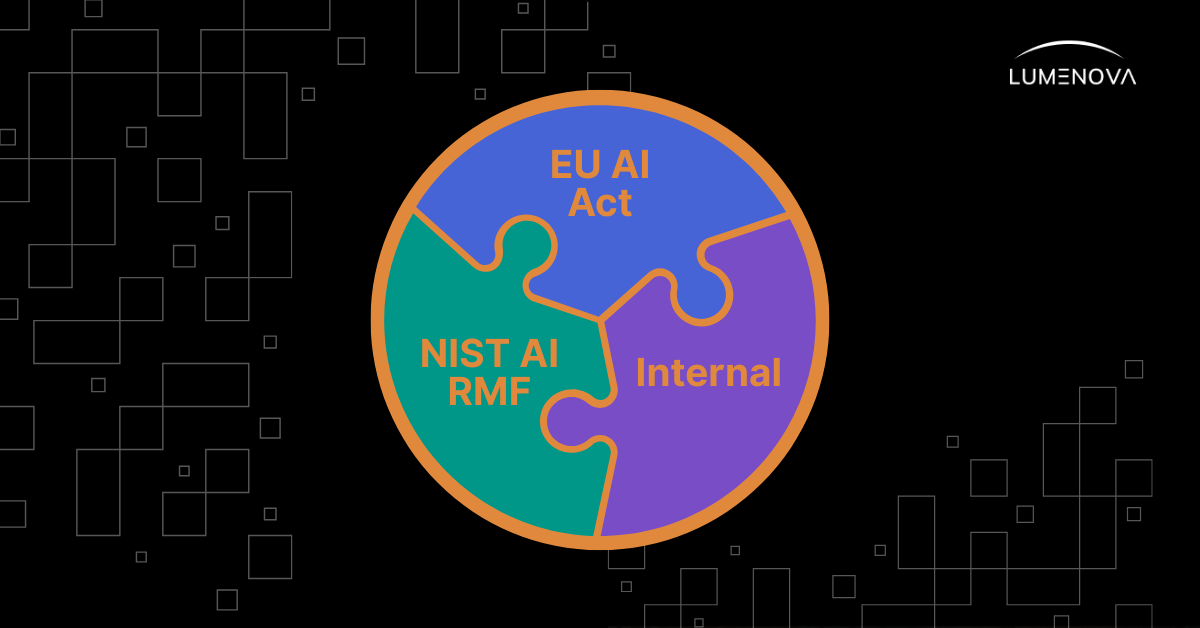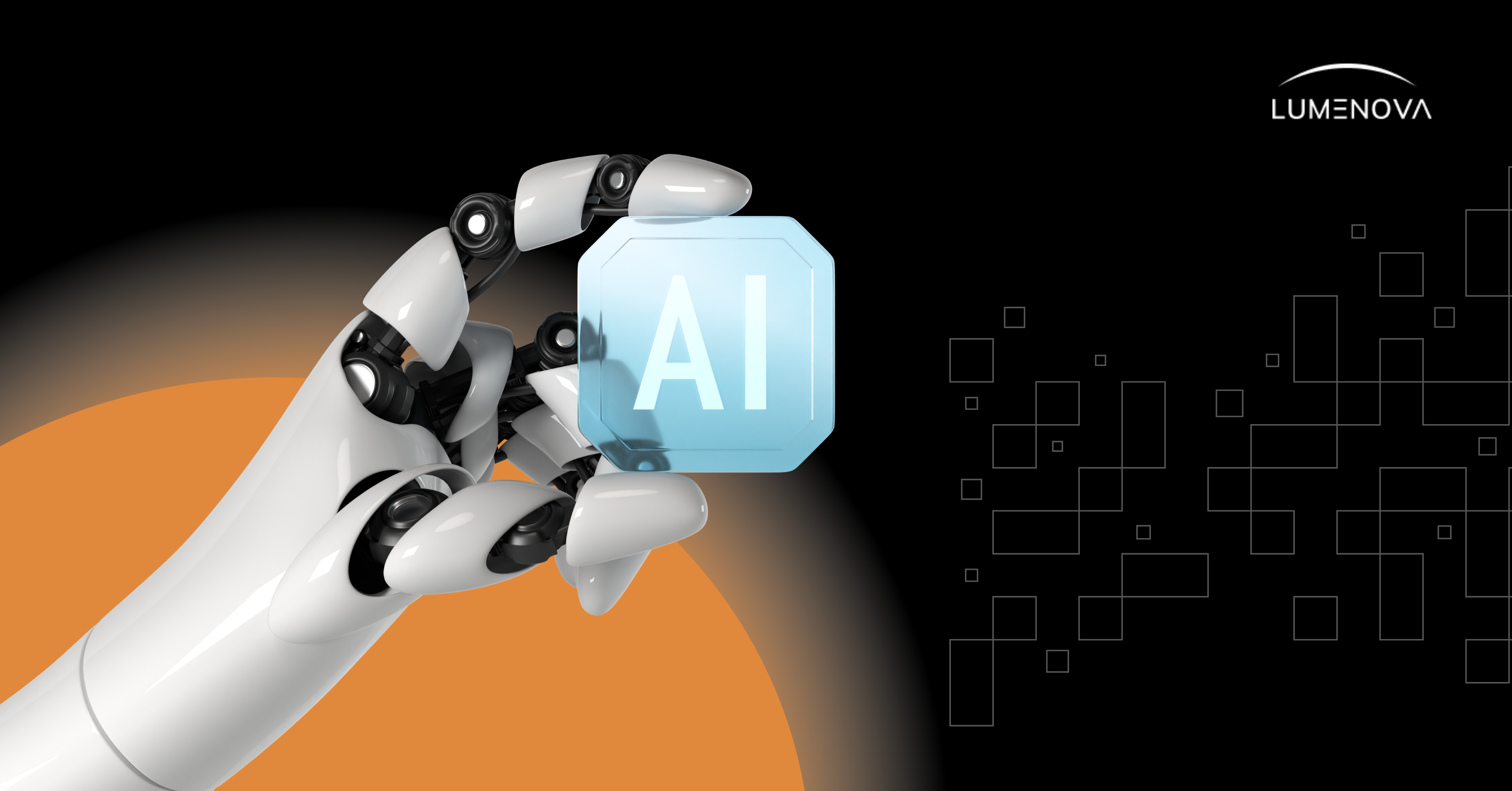EU AI Act Compliance:
Navigating the Future with Lumenova AI
Lumenova AI tailored solutions for AI compliance and risk management are designed to help you navigate the complexities of the European AI regulation: EU AI Act.
- Know Your EU AI Act Next Steps: Stay updated on the EU AI Act’s latest developments and standards, as they will evolve significantly in the near and long term.
- Develop a Robust and Resilient AI Risk Management Action Plan: Analyze the risks posed by AI systems in your organization to classify them within the EU AI Act’s risk classification structure. This will inform the AI governance and risk management protocols your organization adopts.
- Promote Trustworthy and Human-Centric AI Alongside AI Literacy: Lumenova AI helps develop risk profiles for AI models, ensuring alignment with organizational objectives, compliance requirements, and responsible AI use.
- Set Up Automated Compliance Checks: Implement automated systems to routinely evaluate AI practices against current regulations, delivering ongoing assurance and foresight.
- Leverage Detailed Compliance Reporting: Create reports that show compliance status, improvement areas, and recommended actions for regulatory alignment.
The Regulatory Landscape:
What is the EU AI Act
The EU AI Act is ambitious and comprehensive, attempting to regulate AI from all angles in the EU. However, given the rate at which AI continues to evolve and spread, ensuring compliance with the Act’s provisions, especially as they are adapted in response to novel developments in the AI landscape, will become an increasingly complex and difficult endeavor.
To avoid wasting valuable time and resources, organizations can leverage the Lumenova AI’s Responsible AI platform, and capabilities to streamline compliance under the EU AI Act. This will ensure that business operations proceed without compromise in line with AI development and/or deployment initiatives.

Aligning AI Innovation with New EU Regulations
- Create the foundation for standardized AI legislation across the EU and encourage international collaboration among member states and/or other independent actors in the AI ecosystem.
- Preserve and protect EU democratic values, fundamental rights, national security and critical infrastructure.
- Promote a trustworthy and human-centric AI innovation ecosystem, with a particular focus on startups and SMEs.
- Maximize potential AI benefits and minimize potential AI risks, especially for high-risk and general-purpose AI (GPAI) systems.
- Encourage and promote AI literacy to raise awareness around AI skills development, prominent risks and benefits, and responsible AI innovation/utilization.
- Establish regulatory sandboxes in which AI providers can safely test and evaluate their systems prior to deployment.

Technology Focus:
AI System Under
the AI Regulation
AI technologies, which are broadly understood as machine-based systems with learning, adaptation, and inference capabilities, fall under the scope of the EU AI Act.
However, high-risk and GPAI systems are the primary technologies this regulation targets, and some systems, such as those that can be leveraged for biometric categorization, are downright banned (notwithstanding several exemptions, mainly for law enforcement).
Identifying Stakeholders
and Governance
in the EU AI Act
AI providers and deployers who intend to or do operate within the EU, which include private, 3rd party, and government organizations, are held accountable under the EU AI Act. Conversely, EU citizens, which include AI users or anyone affected by the development or deployment of an AI system as it concerns a threat to fundamental rights, health, and safety, are protected.
Governance Bodies:
The Backbone of the EU AI Act
There are four main governance bodies that will oversee, enforce, and adapt the EU AI Act as necessary. These governance bodies and their respective roles are listed below:
- The EU Commission will play a high-level role in defining and executing the EU’s AI governance strategy to ensure that it is consistent across the Union.
- The AI Office, which is part of the EU Commission, will be the overarching authority responsible for overseeing, enforcing, and revising the EU AI Act’s provisions, and serve as the European center for AI expertise.
- National competent authorities will be established within each EU member state to oversee EU AI Act application at a national scale, and report to the Commission and AI Office on EU AI Act implementation progress, difficulties, and suggested updates/revisions.
- The European Data Protection Supervisor will be the authority responsible for overseeing AI development and deployment initiatives pursued by EU government entities, both at the national and Union level.

The Compliance Countdown: EU AI Act Implementation Phases
- Timeframe: the EU AI Act was recently passed with an overwhelming majority in EU Parliament. During the next 12 to 24 months, the Act’s provisions will progressively take effect in various implementation stages.
As for GPAI and high-risk AI systems, additional standards, requirements, and guidelines are likely to emerge within the next 6 to 12 months, and will be enforced as soon as they enter into law. - Compliance: not all AI providers and deployers are subject to the same set of regulatory requirements—the EU AI Act’s tiered risk classification structure designates stricter requirements for high-risk and GPAI systems.
However, compliance is mandatory, and failure to comply can result in penalties up to 35 million euros or 7% of an organization’s annual revenue, whereas non-compliant AI systems can be permanently or temporarily withdrawn or recalled from the market.

Insights on AI Compliance and Regulation

May 22, 2025
AI Governance Frameworks Explained: Comparing NIST RMF, EU AI Act, and Internal Approaches
Compare NIST AI RMF, EU AI Act, & internal governance. Learn how these frameworks guide organizations in building trustworthy, responsible AI.

May 1, 2025
A Closer Look at AI Regulations Shaping the Finance Industry in April 2025
Discover the top AI regulations shaping the finance industry in April 2025. Stay informed on the legal changes you need to know to navigate AI in finance.

April 22, 2025
How to Audit Your AI Policy for Compliance and Security Risks
Regular audits of your AI policy allow you to prioritize severe AI risks and effectively protect your brand.